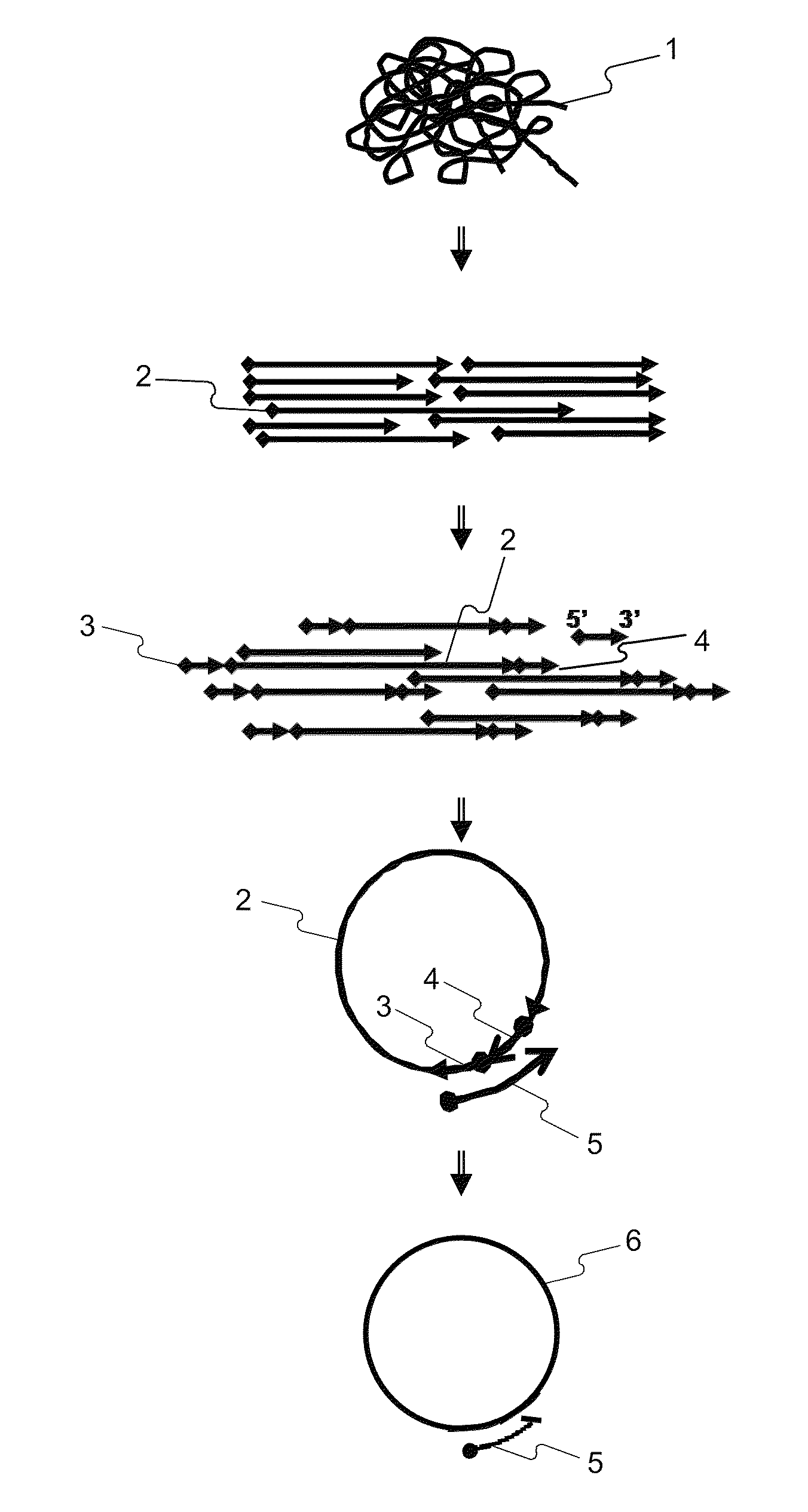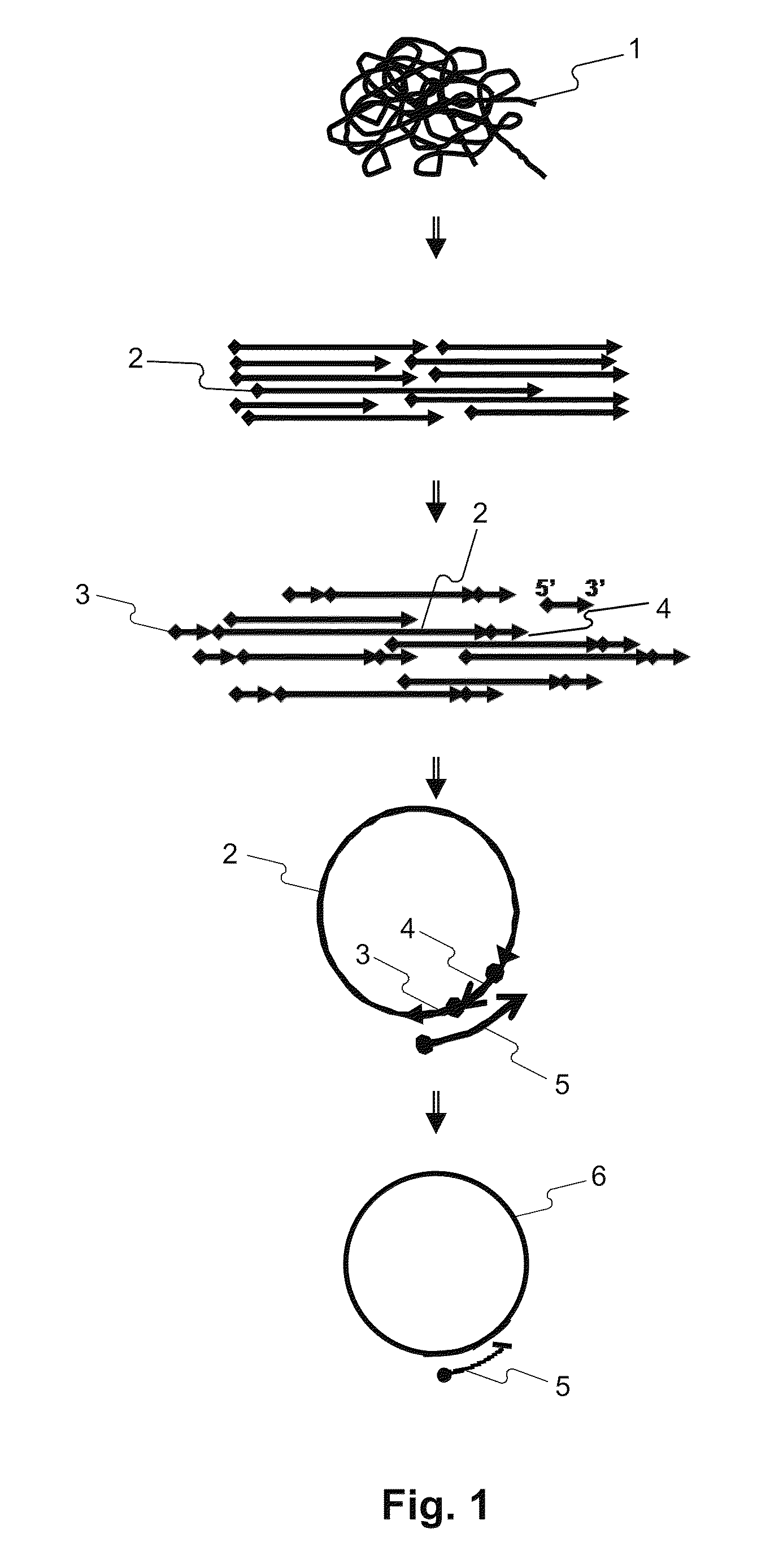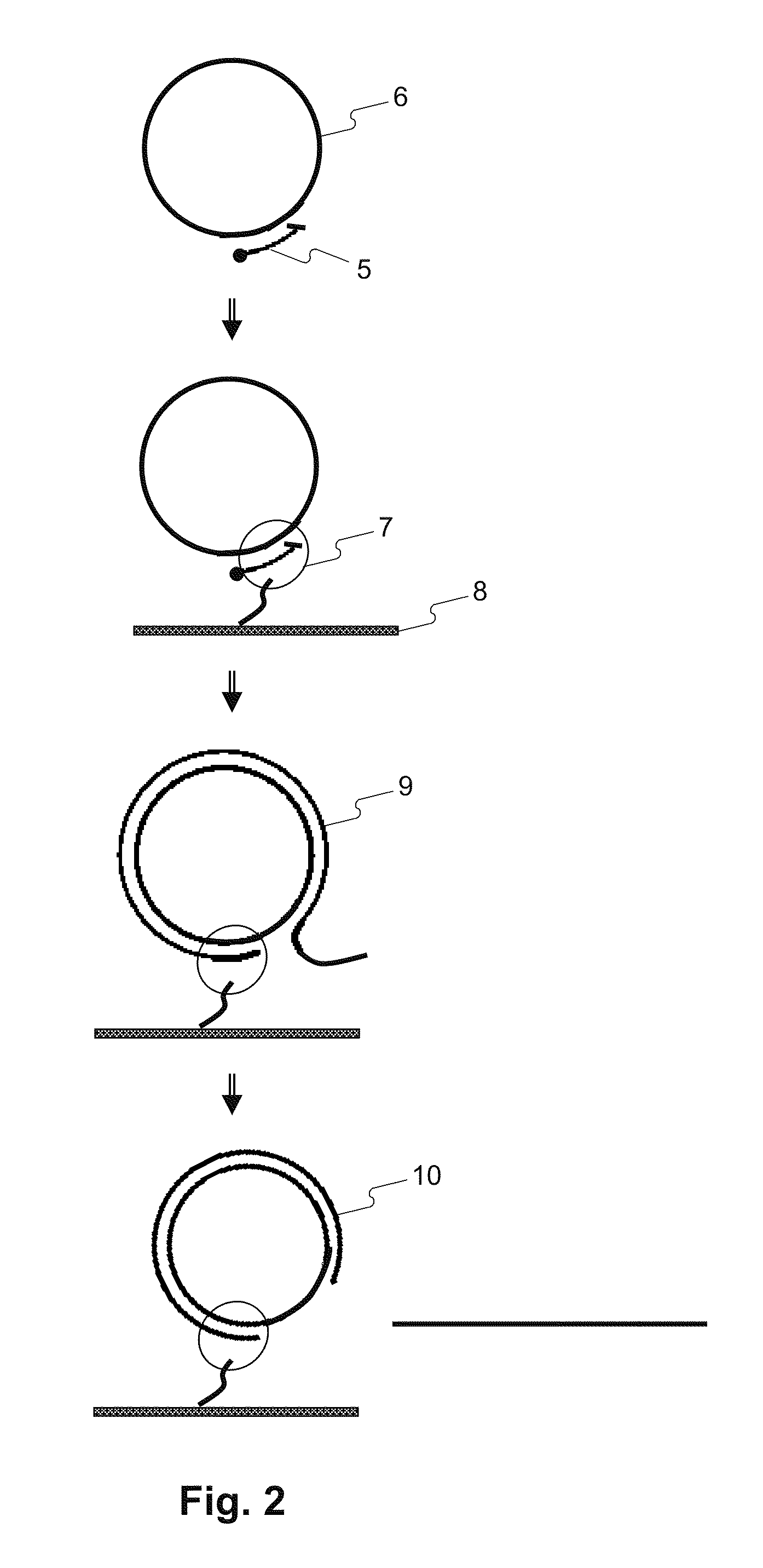Methods for accurate sequence data and modified base position determination
a technology of modified base position and sequence data, which is applied in the field of dna sequencing technology, can solve the problems of limiting the cost and speed of acquiring sequence data by sanger sequencing, affecting the accuracy of the data obtained by using these sequencing technologies, and affecting the accuracy of the data obtained
- Summary
- Abstract
- Description
- Claims
- Application Information
AI Technical Summary
Benefits of technology
Problems solved by technology
Method used
Image
Examples
example 1
Rolling Circle Amplification of a Synthetic Circular Pair-Locked Molecule
[0144]Four oligodeoxyribonucleotides were provided, as shown in Table 1.
TABLE 1Oligonucleotide sequencesNameSequenceSEQ ID NOCPLM-1CGACTTATGCATTTGGTATCTGCGCTCTGCATAT1TTAAATGGAAGGAGATAGTTAAGGATAAGGGCAGAGCGCAGATACCPLM-2CAAATGCATAAGTCGTGTCTTACCGGGTTGATAG2CGGCCGCTCGGAGAAAAGAAGTTGGATGATGCAACCCGGTAAGACApS-T1CCTTATCCTTAACTATCTCCTT3pS-T2TAGCGGCCGCTCGGAGAAAAG4
[0145]CPLM-1 and CPLM-2 were phosphorylated in separate 50 μL reactions in which 30 μL of 10 μM oligodeoxyribonucleotide (final concentration) was treated with 1 μL of 10 U / μL T4 polynucleotide kinase (New England Biolabs (“NEB”) Cat. No. M0201S), in the presence of 5 μL 10× T4 ligase buffer (NEB; the 10× stock buffer contains 10 mM ATP). 14 μL ddH2O were added to give a final volume of 50 μL (see Table 2). The reactions were incubated at 37° C. for 30 min, followed by enzyme inactivation at 65° C. for 20 min.
TABLE 2Phosphorylation reaction conditions (volumes in μ...
example 2
Simulation of Detection of Methylation Using Conversion of C to U by Bisulfite Treatment with a Linear Pair-Locked Molecule
[0152]Determination of the sequence and 5-methylcytosine positions of a hypothetical duplex DNA fragment using conversion of C residues to U residues by bisulfite treatment is simulated as follows. The general scheme of this Example is illustrated in FIG. 12. The sequence of the DNA is shown below.
[0153]DNA Sample (Methylated C Marked as mC)
[0154]The two strands are connected by ligation to a linker sequence (represented as “nnnn”) to give the following product. The linker sequence is suitable for use as a sequencing primer.
(SEQ ID NO: 7)3′-TCTACACCTGmCCCCACCCGmCCTCCACCCAACCCCGnnnnCGGGGTTGGGTGGAGGmCGGGTGGGGmCAGGTGTAGA-5′
[0155]Additionally, a linear flap of known sequence (not shown) is attached to each end of the molecule of SEQ ID NO:7. The flap at the 3′ end is suitable for primer binding for sequencing or replication. The complement of the flap at the 5′ end ...
example 3
Simulation of Detection of Methylation Using Conversion of mC to T by Photochemical Transition with a Linear Pair-Locked Molecule
[0167]Determination of the sequence and 5-methylcytosine positions of a hypothetical duplex DNA fragment using conversion of mC to T by photochemical transition is simulated as follows. The general scheme of this Example is shown in FIG. 13. The sequence of the DNA is shown below.
[0168]DNA Sample (Methylated C Marked as mC)
[0169]The two strands are connected by ligation to a linker sequence (represented as “nnnn”) to give the following product. The linker sequence is suitable for use as a sequencing primer. Linear flaps (not shown) are also attached to the 3′ and 5′ ends of this molecule.
(SEQ ID NO: 7)3′-TCTACACCTGmCCCCACCCGmCCTCCACCCAACCCCGnnnnCGGGGTTGGGTGGAGGmCGGGTGGGGmCAGGTGTAGA-5′
[0170]The product is treated with light so as to photochemically convert 5-methylcytosine (but not cytosine) residues to thymine, giving the following product. The newly forme...
PUM
| Property | Measurement | Unit |
|---|---|---|
| melting temperature | aaaaa | aaaaa |
| melting temperature | aaaaa | aaaaa |
| melting temperature | aaaaa | aaaaa |
Abstract
Description
Claims
Application Information
 Login to View More
Login to View More - R&D
- Intellectual Property
- Life Sciences
- Materials
- Tech Scout
- Unparalleled Data Quality
- Higher Quality Content
- 60% Fewer Hallucinations
Browse by: Latest US Patents, China's latest patents, Technical Efficacy Thesaurus, Application Domain, Technology Topic, Popular Technical Reports.
© 2025 PatSnap. All rights reserved.Legal|Privacy policy|Modern Slavery Act Transparency Statement|Sitemap|About US| Contact US: help@patsnap.com



